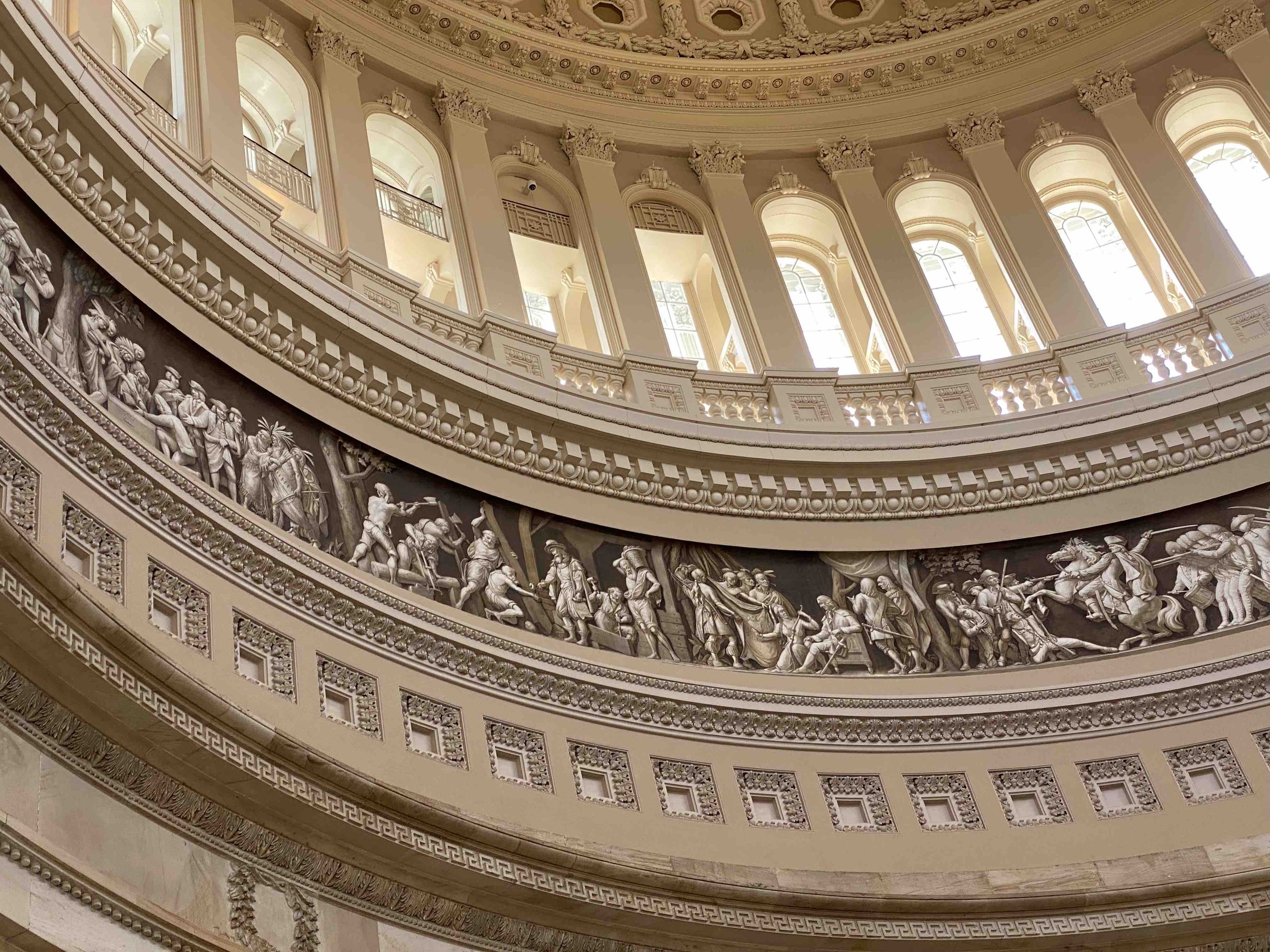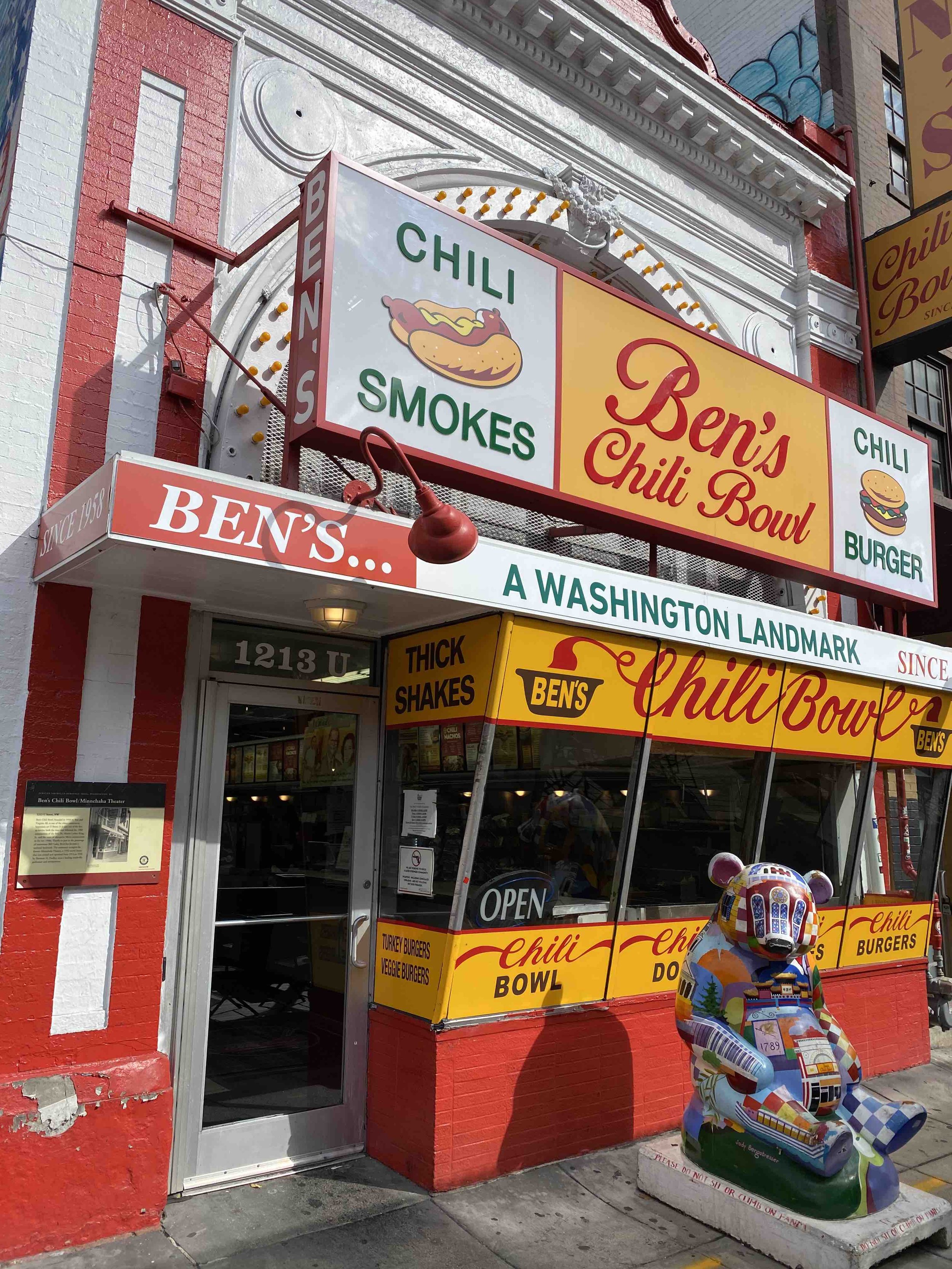
The Best of…Travel
Washington DC Travel Guide
From Foggy Bottom to Georgetown: Where to stay in Washington D.C.
By Eddie Johnson on April 18, 2024
Washington, D.C.—the center of America's political landscape and a city bursting with history, culture, and endless opportunities for exploration. But with so many neighborhoods to choose from, finding the perfect place to stay can feel a bit overwhelming. Don't worry, we've got you covered! Let's dive into some of the best areas to stay in while visiting the nation's capital.
Dupont Circle
If you're looking for a lively neighborhood with a cosmopolitan flair, Dupont Circle is your go-to spot. This area is known for its trendy boutiques, eclectic eateries, and bustling nightlife. Plus, it's within walking distance of many of D.C.'s top attractions, including the National Mall and the Smithsonian museums. Whether you're a foodie, a shopper, or a history buff, Dupont Circle has something for everyone.
Where to stay near Dupont Circle
The Jefferson. Address: 1200 16th St NW, Washington, DC 20036
The Dupont Circle Hotel. Address: 1500 New Hampshire Ave NW, Washington, DC 20036
Swann House Historic Dupont Circle Inn. Address: 1808 New Hampshire Ave NW, Washington, DC 20009
Georgetown
For a more upscale and historic vibe, consider staying in Georgetown. Cobblestone streets, charming row houses, and the picturesque waterfront make this neighborhood a favorite among visitors. Here, you'll find a mix of high-end shops, cozy cafes, and some of the city's best restaurants. And don't miss out on exploring Georgetown University's stunning campus and the C&O Canal for a leisurely stroll.
Where to stay near Georgetown
Four Seasons Hotel Washington D.C. Address: 2800 Pennsylvania Avenue NW, Washington, DC 20007
The Ritz-Carlton Georgetown. Address: 3100 S St NW, Washington, DC 20007
Rosewood Washington, D.C. Address: 1050 31st St NW, Washington, DC 20007
Foggy Bottom
Located just west of the White House and the National Mall, Foggy Bottom is a convenient and historic neighborhood that offers a mix of academic charm and cultural attractions. Home to George Washington University, the area buzzes with student life, but it also boasts the world-class Kennedy Center for the Performing Arts. The neighborhood's tree-lined streets and proximity to the Potomac River make it a peaceful retreat from the hustle and bustle of downtown D.C.
Where to stay near Foggy Bottom
The Ritz-Carlton, Washington, D.C. Address: 1150 22nd St NW, Washington, DC 20037
Hotel Lombardy. Address: 2019 Pennsylvania Avenue NW, Washington, DC 20006
State Plaza Hotel. Address: 2117 E St NW, Washington, DC 20037
Exploring the National Mall: A Walk Through History in the Heart of DC
This iconic stretch of greenery and monuments isn’t just a park; it's a living history book, an open-air museum, and a gathering spot for locals and tourists alike. Stretching over two miles from the U.S. Capitol to the Lincoln Memorial, the National Mall is home to some of America's most cherished landmarks and monuments. Whether you're a history buff, an architecture enthusiast, or just someone looking for a peaceful place to stroll, the Mall has something for everyone.
Must-See Memorials & Monuments
Lincoln Memorial: The Lincoln Memorial, with its imposing marble columns and the larger-than-life statue of Abraham Lincoln, is an absolute must-visit. It's not just a tribute to our 16th president but a symbol of unity and resilience.
Washington Monument: Climb to the top of the Washington Monument, the towering obelisk that dominates the D.C. skyline. You'll be rewarded with breathtaking views of the city and beyond.
Veterans Memorials: The World War II Memorial, the Korean War Veterans Memorial, and the Vietnam Veterans Memorial, each offering its own poignant reminder of the sacrifices made and the battles fought for freedom.
Tips for Your Visit
Wear Comfortable Shoes: With so much ground to cover, you'll want to be prepared for some walking.
Visit Early or Late: To avoid the crowds, consider visiting early in the morning or later in the evening.
Take Your Time: Don't rush through the Mall. Take the time to read the inscriptions, admire the architecture, and soak in the history.
Lincoln Memorial
World War II Memorial
Korean War Veterans Memorial
Vietnam Veterans Memorial: Three Servicemen
Washington Monument
Best Hotels in Washington DC
Dupont Circle
Georgetown
Foggy Bottom
Getting to Washington DC
Washington, D.C., is served by three major airports:
Ronald Reagan Washington National Airport (DCA): Located in Arlington, Virginia, just across the Potomac River from downtown D.C., Reagan National Airport is the closest airport to the city center. It primarily serves domestic flights and offers easy access to the Metro system, making it a convenient option for travelers visiting the capital.
Washington Dulles International Airport (IAD): Situated in Dulles, Virginia, approximately 26 miles west of downtown D.C., Dulles International Airport is the city's primary international airport. It serves a mix of domestic and international flights and offers a variety of transportation options, including shuttles, buses, and the Silver Line Express bus to the Metro.
Baltimore/Washington International Thurgood Marshall Airport (BWI): Located approximately 30 miles northeast of downtown D.C., BWI Airport is another option for travelers visiting the capital region. While it's a bit farther out, BWI offers a wide range of domestic and international flights and provides various transportation options, including Amtrak trains, MARC trains, and shuttles.
Navigating the Metro: Your Guide to Washington DC's Subway
Navigating the Metro might seem a bit intimidating at first, but fear not! With a little guidance, you'll be moving around the city like a local in no time. So grab your SmarTrip card and let's dive into the ins and outs of using the Metro.
Getting Started: The Basics
First things first, you'll need a SmarTrip card to ride the Metro. You can purchase these handy cards at any Metro station, and they're reloadable, making them super convenient for frequent travelers.
Understanding the Lines
Washington, DC's Metro system is color-coded, which makes it relatively easy to understand. There are six lines: Red, Blue, Orange, Yellow, Green, and Silver. Each line has its own designated color, so just look for the color of your line on the station maps and signs.
Planning Your Route
Before you hop on the Metro, it's a good idea to plan your route. You can use apps like Google Maps or the official WMATA website to map out your journey. Simply enter your starting point and destination, and these tools will provide you with the best Metro routes, including transfer points and travel times.
Paying Your Fare
Once you've planned your route and arrived at the station, it's time to pay your fare. Just tap your SmarTrip card on the card reader at the entrance gate, and you're good to go! Remember to keep your card handy, as you'll need it to exit the station as well.
Navigating the Stations
Metro stations can be quite busy, especially during peak hours. To make your commute smoother, pay attention to the signs and announcements. They'll guide you to the correct platform and provide information on train arrivals and departures.
Safety First
While riding the Metro, always be mindful of your surroundings. Keep an eye on your belongings and avoid displaying valuables. If you ever feel unsafe or encounter any issues, don't hesitate to reach out to Metro staff or use the emergency call boxes located throughout the stations.
Exiting the Station
When you reach your destination, follow the signs to the exit. Tap your SmarTrip card on the card reader at the exit gate, and voila! You've successfully navigated the Metro.
Final Thoughts
Navigating the Metro in Washington, DC, might seem a bit daunting at first, but with a bit of practice and these handy tips, you'll master it in no time. So go ahead, explore the city with confidence, and enjoy the convenience of DC's world-class Metro system!
Happy travels!




























